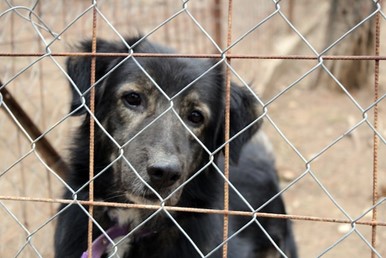Cort Dennison is a football coach whose passion extends beyond the gridiron to a cause close to his heart: animal advocacy. Cort has joined forces with his mother, Marianne, to work with the animal advocacy group
CAWS. Through CAWS you can adopt, foster, donate, or volunteer.
In the following article, Cort Dennison delves into a topic that resonates deeply with him—the significance of no-kill animal shelters. As an individual dedicated to both shaping young athletes and championing the welfare of animals, Dennison offers a unique perspective on how these shelters play a pivotal role in nurturing a compassionate society while providing invaluable support to our furry companions.
Many animal shelters claim to be “no-kill”, but what does this term really mean and what is the philosophy behind them?
The term originated from a movement that began in the 1980s and 90s. During that time, people would go to their local breeder instead of adopting from animal shelters. Back then, shelter animals were considered less desirable compared to purebred animals.
Since no one wanted to adopt the animals housed there, the shelters became overcrowded. Eventually, countless animals were euthanized even though they are completely healthy.
Cort Dennison explains that this is when the no-kill campaign began. It considers that all animals should be saved and cared for, and those with curable sickness will be given proper medical care.
Since then, adoption numbers have
quadrupled over the last decade, according to a 2011 data gathering by Animal Shelters Count. As more people opted for adoption, numerous animal shelters gained more funding for building larger facilities, hiring more staff, and buying better medical equipment. Most importantly, cases of euthanized animals have greatly decreased.
Cort Dennison Explains the No-Kill Approach
While the no-kill philosophy may seem like a completely positive thing, many animal shelters disagree with it. Why?
Think about this: If an animal has a severe and agonizing illness beyond cure, isn’t euthanasia the most humane option to liberate them from their suffering?
By trying to save and keep a sick animal, the other animals in the shelter also become exposed to danger. Cort Dennison explains that for them, euthanasia can be an act of compassion for an animal with a severe or untreatable illness, no matter how difficult. If the sick animal poses a danger to the community, the most humane thing to do is to euthanize them for the sake of protecting other animals in the shelter.
“Unfortunately, no-kill doesn’t mean what most people think it means,” says Janelle Dixon,
AHS President and CEO. “It’s like labeling food products ‘natural’ or ‘gourmet.’ Those terms appeal to the public but without any kind of watchdog or standards they are virtually meaningless. You can’t take them at face value.”

 A Misunderstood Label
A Misunderstood Label
Cort Dennison football coach says that back then, the no-kill campaign united communities in saving animal lives. But today, the label caused many issues among animal organizations.
No-kill is indeed a catchy phrase, full of meaning and emotion. The term embodies an idea that all animal lovers wanted to come true. But ever since it was created, the term has changed the way people perceive animal organizations.
But the truth is, sometimes these facilities simply have no choice.
“Alarmingly, any organization that doesn’t claim no-kill status is now labeled a kill shelter,” says Dixon. “I don’t think people really understand the negative impact that has and how much it demeans and demoralizes people who work in those shelters, people who have dedicated their lives to helping animals.”
For this reason, the campaign has done more harm than good. Many animal shelters were put in a bad light and lost public support just because of a divisive, misunderstood label.
Cort Dennison football coach says instead of focusing on what each shelter has contributed to the community, they are being judged for what they are doing right and wrong. In the end, it is the animals and the community that suffer from this.
Above all, it invalidates an animal organization’s impact in their communities and across the country. Whether they have a no-kill status or not, they should not be used to determine an organization’s impact or worth.
It is important to look at the bigger picture—the animals they care for, the programs they offer, and how they strive to create a safer community for animals.
Conclusion
Animal shelters exist for a common goal: to save animals and provide them with a safe and kind environment to live in. To achieve that, communities need collaboration and collective responsibility.
Cort Dennison says that in order for these shelters to be successful, all stakeholders in that community must collaborate to achieve and sustain that common goal. This means cooperation among animal shelters, rescue groups, government agencies, and community members, who are committed to progressive lifesaving.

 A Misunderstood Label
A Misunderstood Label